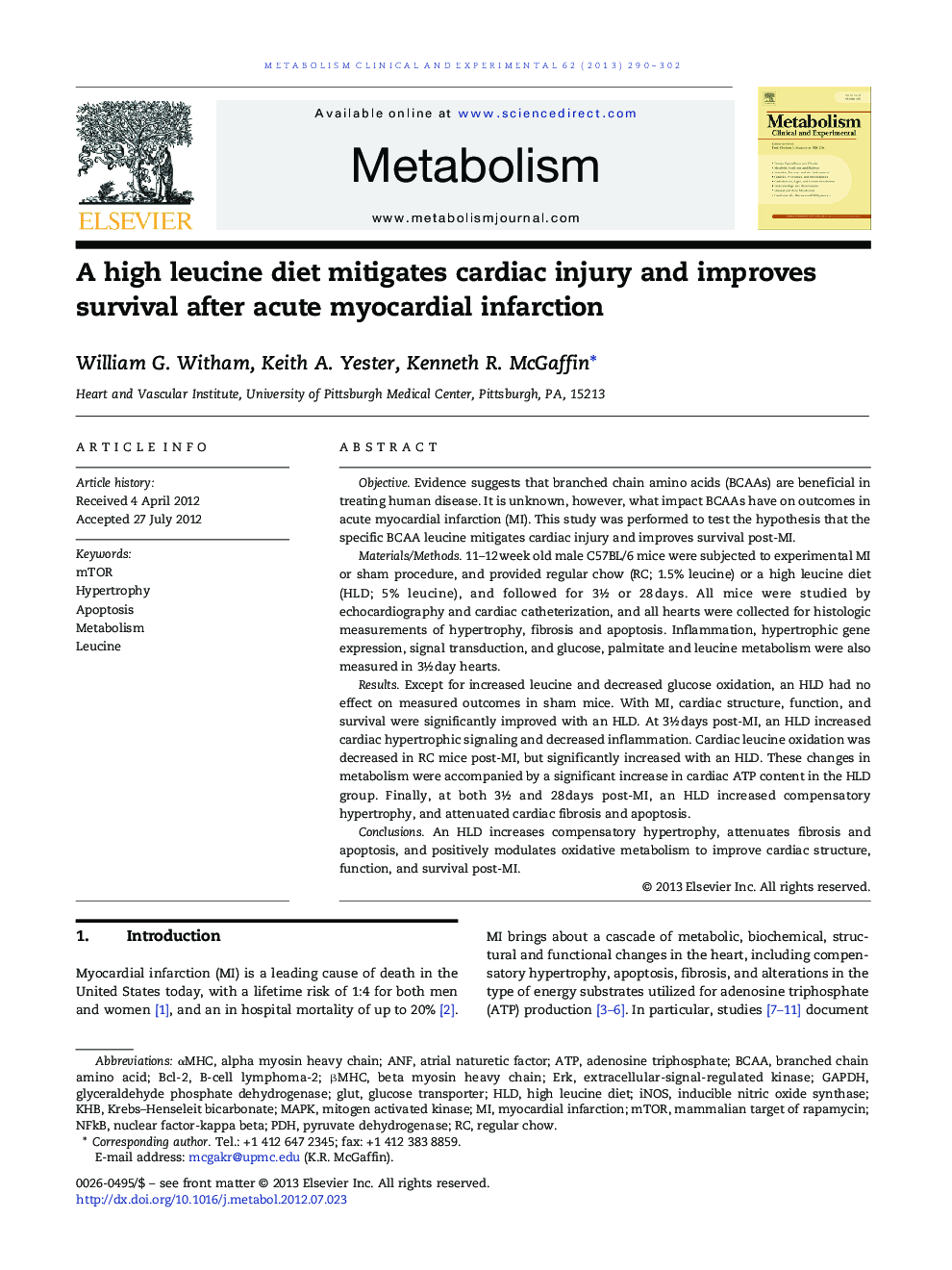| کد مقاله | کد نشریه | سال انتشار | مقاله انگلیسی | نسخه تمام متن |
|---|---|---|---|---|
| 2806138 | 1157099 | 2013 | 13 صفحه PDF | دانلود رایگان |

ObjectiveEvidence suggests that branched chain amino acids (BCAAs) are beneficial in treating human disease. It is unknown, however, what impact BCAAs have on outcomes in acute myocardial infarction (MI). This study was performed to test the hypothesis that the specific BCAA leucine mitigates cardiac injury and improves survival post-MI.Materials/Methods11–12 week old male C57BL/6 mice were subjected to experimental MI or sham procedure, and provided regular chow (RC; 1.5% leucine) or a high leucine diet (HLD; 5% leucine), and followed for 3½ or 28 days. All mice were studied by echocardiography and cardiac catheterization, and all hearts were collected for histologic measurements of hypertrophy, fibrosis and apoptosis. Inflammation, hypertrophic gene expression, signal transduction, and glucose, palmitate and leucine metabolism were also measured in 3½ day hearts.ResultsExcept for increased leucine and decreased glucose oxidation, an HLD had no effect on measured outcomes in sham mice. With MI, cardiac structure, function, and survival were significantly improved with an HLD. At 3½ days post-MI, an HLD increased cardiac hypertrophic signaling and decreased inflammation. Cardiac leucine oxidation was decreased in RC mice post-MI, but significantly increased with an HLD. These changes in metabolism were accompanied by a significant increase in cardiac ATP content in the HLD group. Finally, at both 3½ and 28 days post-MI, an HLD increased compensatory hypertrophy, and attenuated cardiac fibrosis and apoptosis.ConclusionsAn HLD increases compensatory hypertrophy, attenuates fibrosis and apoptosis, and positively modulates oxidative metabolism to improve cardiac structure, function, and survival post-MI.
Journal: Metabolism - Volume 62, Issue 2, February 2013, Pages 290–302